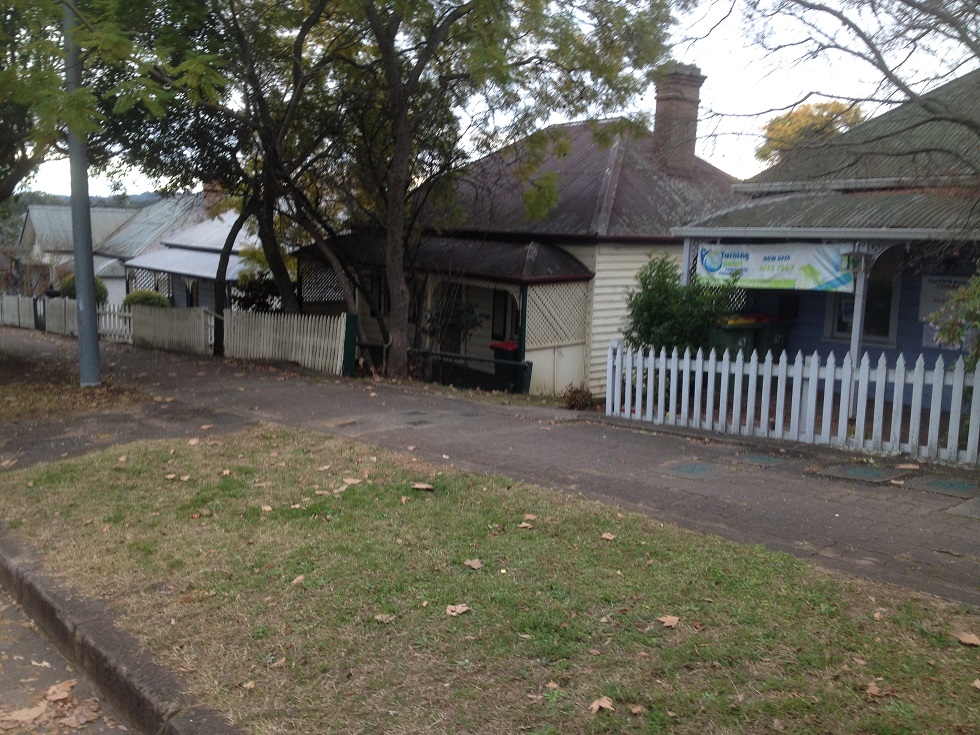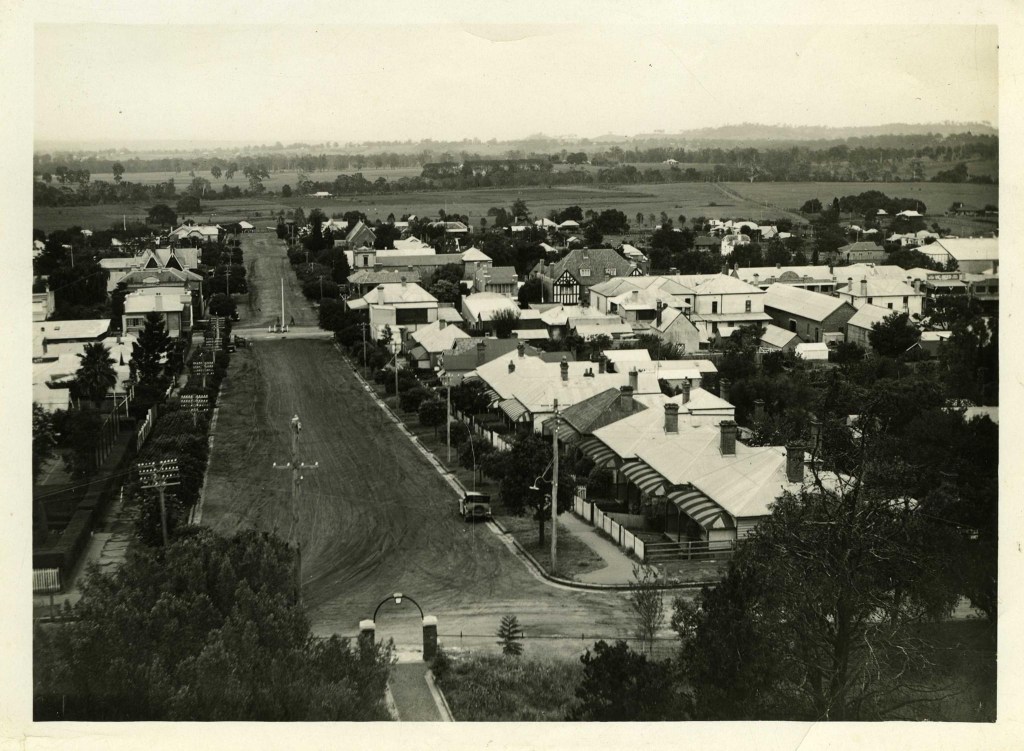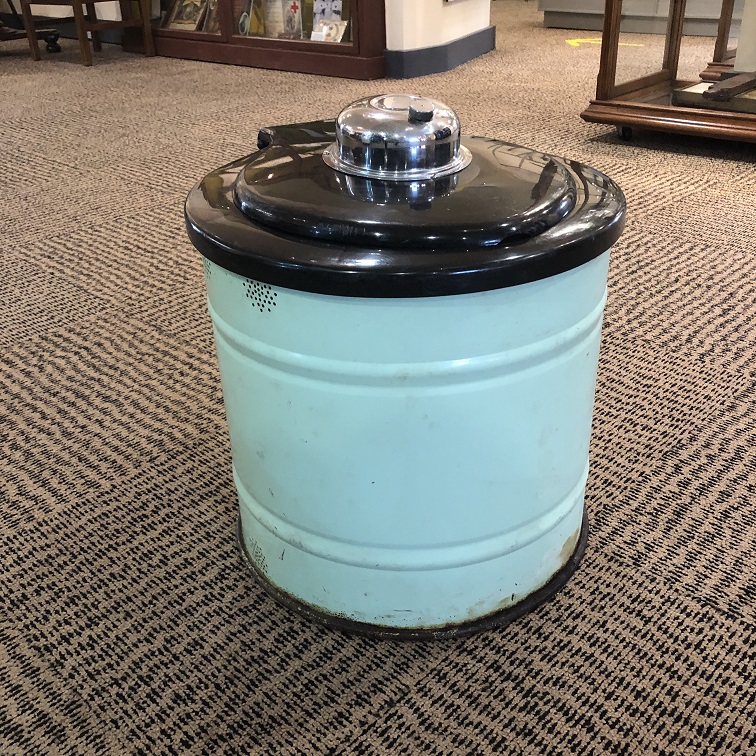A funny little dunny draws controversy
In the backyard of a historic cottage at 80 John Street, a funny little dunny that dates from the 1890s. In 2011 it created a great deal of fuss when there was a proposal for a two-storey commercial development at the rear of the cottage site and the demolition of the dunny for parking.

A funny little dunny goes by a host of names
The funny little dunny is an example of a building that has gone by many names over the years. According to Margaret Simpson from the Powerhouse Museum, they have variously been called a
Lav, privy, loo, thunderbox, WC, outhouse, toot, throne, restroom, powder room, washroom, john, kharsi, bog, comfort station, and even twinkle-palace, are just some of the euphemisms used for toilets. If you were in the military you’d be using the latrines, on a sailing ship going to the heads, but in country Australia it’d be the dunny.
(https://maas.museum/inside-the-collection/2018/07/18/present-and-past-family-life-toilets/)
A big fuss for a little dunny
The little outhouse created quite a storm, and any development proposal in upper John Street below St John’s Church was destined to create some sort of controversy.

Upper John Street has a row of historic Victorian workman’s cottages that the State Heritage Inventory’s Statement of Significance describes this way:
This line of simple, neat, and pleasing four cottages (74-80 John Street) along the eastern side of John Street, leading up to the view of St Johns Church spire, are representative of late nineteenth-century country town cottages. They are remarkably consistent in quality and form a good group.
(State Heritage Inventory Database No 1280026)
The cottage at No 80, where the loo is located, is described as a weatherboard cottage that had a ‘corrugated iron hipped roof’ with a ‘brick chimney, timber-posted corrugated-iron bullnose verandah and four-pane double-hung windows with timber shutters’ enclosed by a front picket fence.
(State Heritage Inventory Database No 1280026)

The development drew community concern at several levels: obstructed views from Broughton Street, the bulk and height of the proposed new building, and the demolition of the loo.
Objections abound
The Camden Historical Society lodged an objection with the consent authority, Camden Council, and then published an article in the 2011 Winter Newsletter.
This was followed by a front-page story in the Macarthur Chronicle under the headline DE-THRONED, with a full-page picture of society member Robert Wheeler with the loo in the background.

The report stated that the loo was
‘One of the few in remaining buildings in the town area which were common before the town was connected to the sewer in 1938.
The Chronicle reported that ‘former Camden town planner Robert Wheeler [was] leading calls for the loo to be preserved due to its historic significance.
‘Mr Wheeler said the proposed building was not ‘sympathetic’ to the heritage of the surrounding area and the outdoor toilet should not be demolished’.
(Macarthur Chronicle, 28 June 2011).
[Camden Historical Society] vice-president John Wrigley said, ‘The society was concerned about the ‘block-like’ look to the new building and the demolition of the outside toilet’.
The little dunny is special
The Macarthur Chronicle posed the question:
‘Is this Camden’s oldest toilet?’
(Macarthur Chronicle, 28 June 2011).
The Development Conservation and Landscape Plan noted the special architectural feature of the outhouse. It had a ‘custom-rolled roof’ that ‘may have been by half a water tank’, unlike standard outhouse roofs, which were ‘gables or skillion’.
(Source: Stedinger Associated, 78-80 John St, Camden, Conservation Schedule of Works and Landscape Plan, Unpublished, 2011, Camden).

The pan system
The Landscape Plan detailed how the ‘outhouse, dated from the 1890s, was part of Camden’s pan toilet system. Cottage residents who used the outhouse walked along a narrow path from the loo to the kitchen.

The toilet had a pan for ‘nightsoil’ collected by a Camden Council contractor. The contractor accessed the pan through a small opening in the rear wall of the outhouse and replaced the full pan with an empty can.
The cottage outhouse was not built over a pit or ‘long drop’ for the excrement and urine like those built on local farms.
(Source: Stedinger Associated, 78-80 John St, Camden, Conservation Schedule of Works and Landscape Plan, Unpublished, 2011, Camden).
A vivid description of the experience of using a pan system has been provided by Margaret Simpson from the Powerhouse Museum.
I grew up in a small New South Wales rural town before the sewer was connected. Ours was an outside toilet in the backyard. Underneath the seat plank was a removable sanitary pan (dunny can). About once a week the full pan was taken away and replaced with a clean empty one. This unfortunate task was the job of the sanitary carter (dunny man) with his horse and wagon and later a truck. Going to the dunny, especially in summer towards the end of the collection week, was a breath-holding, peg-on-nose experience.
Modern commercial toilet paper was not part of the pan system experience. She says:
In Australia, newspapers were cut into sheets by the householder and held together with a piece of fencing wire or string and hung on a nail inside the dunny. Another source of paper were the thick department store catalogues like Anthony Horderns sent out to householders.
(https://maas.museum/inside-the-collection/2018/07/18/present-and-past-family-life-toilets/)
Controversy rages over the pan and the sewer
The pan system installed in the John Street outhouse was standard in the late 19th and early 20th centuries in New South Wales.
In the late 19th century, controversy raged over the benefits or lack of them between the pan system and water carriage systems. Flush toilets and water carriage of sewerage date back to 2500 BC.
Sharon Beder argues in her article ‘Early Environmentalists and the Battle Against Sewers in Sydney’ that,
Sewer gas was a big problem in the nineteenth century when knowledge of how to trap the gas and prevent its return back into homes and city streets was scarce and workmanship in sewer construction often cheap and shoddy.
Air pollution was a particularly damning accusation since it was believed that ‘miasmas’ were responsible for many of the life-threatening diseases around at that time.
(https://documents.uow.edu.au/~/sharonb/sewage/history.html)

A 1914 advertisement for a contract to collect nightsoil (excrement) at Picton gives an idea of how nightsoil was disposed of in our local area. The contractor used a sanitary cart pulled by a horse to collect the pans from outhouses in the town area. The contractor was then expected to dispose of the nightsoil by dig trenches at the depot, one mile from the town centre. At the time, there were 270 pans in the Picton town area.
The town finally connected to a sewer
Before World War One, Camden Municipal Council had considered installing a septic tank sewerage system for the town area. (Camden News, 24 August 1911)
In 1938 the council was given permission to proceed with a sewerage scheme for the town managed by Sydney Metropolitan, Water, Sewerage and Drainage Board. The town sewerage scheme was completed in 1939. (Camden News, 29 June 1939)

A story about nightsoil disposal and long drops in goldrush Melbourne in the mid-19th century can be found here.
Updated 21 June 2023. Originally posted on 25 April 2021 as ‘A funny little dunny draws controversy’


You must be logged in to post a comment.